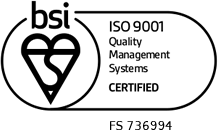The Construction sector is traditionally a conservative one which responds cautiously to demand for new functionality, improved efficiency and greater environmental friendliness. Alongside fundamental materials requirements such as strength, durability, safety, etc, cost drives everything in this sector. However, there are still many fascinating materials technology developments to be found including: Energy harvesting technologies – from sunlight, vibration, rainfall, wind, and so on; ultra-high thermal insulating materials using micro and nano vacuum voids; breathable materials with nano-pores used for air filtration; hydro-ceramic materials using hydrogels that actually perspire to keep buildings cool without energy intensive air conditioning systems; integrating power, communications and smart systems, lighting, heating, and cooling embedded within the fabric of the building structure, in ‘smart buildings’; the use of smart glass to dynamically moderate and control natural sunlight and heat, and dynamically create private spaces within buildings. These examples are just a few of the multitude of ways that modern materials science is being used to maximise efficiency, minimise cost, reduce waste and minimise environmental impact.
Although special waterproof, self repairing, concrete was known to the Romans two and a half thousand years ago, it has only very recently been properly understood and explained scientifically. New research in this field continues, with the advent of so called programmable cement that uses electrically charged surfactants in the mix to dynamically control the fine structure of the cement as it sets.
Perhaps surprisingly also, biological sciences and organic chemistry are increasingly teamed with materials science in construction applications. For example, current research into the use of dormant embedded fungal spores to instigate crack and fissure repair in concrete; the use of bacteria cultures to literally grow building bricks around grains of sand, avoiding expensive clay quarrying and kiln firing; 3d-printable bio-plastics for internal structures, fixtures and fittings; the selective replacement of some steel and concrete structures with advanced thermoplastic carbon fibre composites, to better protect buildings against catastrophic earth quake damage: new timber based composite materials (so called mass timber), that not only afford great performance against cost but also fulfil a role as synthetic carbon sinks to combat climate change.
Ultimately, architectural design specification is essential for utilisation of new materials in this sector, and the hard science of materials characterisation and materials testing plays an irreplaceable role in informing those safety critical decisions and accelerating the adoption of badly needed new materials and materials based techniques in the construction sector.
Application of Piezo Materials in Construction
A key application of piezoelectric materials in this sector is Structural Health Monitoring (SHM). SHM is an approach to collecting data about critical structural elements, using sensors (of piezoelectric nature) to provide indicators when some anomalies are detected in a structure.
An example of this technology is embedded piezoelectric sensors in structures like bridges and aircraft. These sensors provide real time monitoring of various structural changes, like stress and strain, and data provided by these sensors are usually transmitted to a remote data acquisition and analysis centre.
Piezoelectric-based strength monitoring methods offer an innovative experimental approach to conduct concrete strength monitoring.
Researchers at the University of Houston have embedded piezoelectric transducers in the form of ‘smart aggregates’ into a concrete specimen during casting. Piezoceramic materials can be used as actuators to generate high frequency vibrating waves, which propagate within concrete structures. These materials can also be used as sensors to detect the waves.
Further, the electro-mechanical impedance (EMI) sensing technique utilizing piezoelectric materials has emerged as a tool for the implementation of a built-in monitoring system for damage detection of buildings.
A team of researchers at the Pukyong National University in collaboration with industry, have studied the applicability of the EMI sensing technique for strength gain monitoring of early age concrete. As with the above research, PZT patches were employed to sense the EMI signature of curing concrete.



